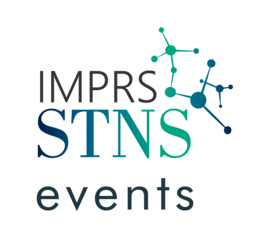Time-dependent density functional theory: Linear response and beyond
Tutorial
- Datum: 07.08.2019
- Uhrzeit: 16:00 - 18:00
- Vortragende(r): Dr. Sangeeta Sharma
- Max-Born Institute for Nonlinear Optics and Short Pulse Spectroscopy
- Ort: Max-Planck-Institut für Mikrostrukturphysik, Weinberg 2, 06120 Halle (Saale)
- Raum: Lecture Hall, B.1.11
- Gastgeber: IMPRS-STNS

Abstract
Time dependent density functional theory (TD-DFT) extends density functional theory into the time domain. In the talk I will give a brief sketch of the Runge-Gross theorem (the basic theorem for TDDFT)
which establishes that the time-dependent external potential is a unique functional of the time dependent density, given the initial state. Based on this theorem, a system of non-interacting particles
can be chosen such that the density of this non-interacting system is equal to that of the interacting system for all times. Having this density, all time dependent observables can then be calculated. These
observables can be calculated in two distinct regimes:
(a) small external perturbations (linear response regime): In this case I will discuss excitonic physics within linear reponse TD-DFT. Although formally exact, the predictions of TDDFT are only as good as the approximation of the exchange-correlation (xc) kernel. There are only a few xc-kernels which correctly reproduce the excitonic effect, but these kernels suffer from either being as computationally expensive as solving full many body problem or depend upon external parameters. In our work we propose a new approximation[1] for the xc-kernel -- the so called bootstrap approximation. We demonstrate that this kernel is nearly as accurate as doing a full many-body calculation and the computation cost for the bootstrap kernel is minimal and no system-dependent external parameter is required.
(b) large external stimuli (beyond linear response): In this case I will discuss how laser pulses can be used to manipulate spins. In will show results obtained using TD-DFT for all-optical switching-- the type of coupling between the constituent atoms of a magnetic solid, i.e. ferromagnetic (FM) or antiferromagnetic (AFM), is the most fundamental property of any magnetic material. This coupling is governed by the exchange interaction, which for a typical magnetic material is of the order of a few 100s of femtoseconds. In our work we demonstrate that a rich control over magnetization at subexchange time scales (of the order of few tens of femtoseconds) is possible, including even changing the magnetic order from AFM to FM. By investigating a wide range of multi-sublattice magnetic materials we are able to formulate three simple rules that predict the qualitative dynamics of magnetization for ferromagnetic, antiferromagnetic, and ferrimagnetic materials on sub-exchange time scales.